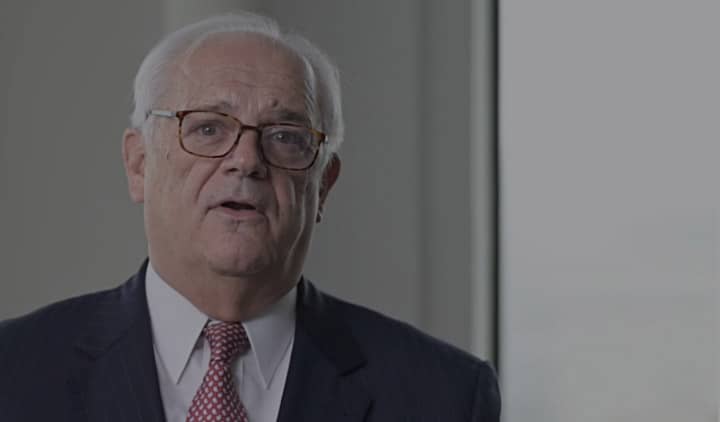The legal team at Walkup, Melodia, Kelly & Schoenberger handles spinal injury cases in the Bay Area and throughout California and the West. For more than 55 years, our attorneys have helped spinal cord injury victims obtain the compensation they are entitled to so they can live the most fulfilling lives possible.
The outcome of a spine injury case typically hinges on the unique circumstances of a person’s injury. To arrange a free consultation to discuss the details of your case, call us at 415-906-3764 or contact the Walkup firm online.
Our attorneys can outline your legal options and discuss the possible next steps in your legal case.
Examples Of Our Success In Recovering Money For Paralyzed Clients
Quadriplegia Due To Birth Injury — $23.2 Million Jury Verdict
Our team of quadriplegia/paralysis attorneys obtained a verdict on behalf of a 2-year-old injured at birth due to prolonged ischemia of the brain known as hypoxic ischemic encephalopathy. The Walkup neuro trial team proved that a family practice doctor with obstetrical privileges failed to summon a board-certified obstetrician with surgical privileges soon enough for a mother who needed an emergency cesarean section delivery. Because the baby was denied oxygen, her brain was damaged and she was rendered a spastic quadriplegic requiring 24-hour care. The jury verdict included recovery for all of the child’s attendant care and medication needs.
Road Hazard Injury – $9 Million Quadriplegia Settlement
Our spinal cord injury group represented a 29-year-old amateur bicyclist whose front tire became wedged within the broken grates of a storm drain cover in Alameda County. Traveling at approximately 10 mph, our client was propelled over the handlebars of his bicycle when the bike came to an abrupt stop. He struck his head and sustained a fracture dislocation of both C3 and C4. Although he retained some strength in the lower extremities, our client required assistance in activities of daily living. Our spinal cord injury attorney team proved that the cost of future medical and attendant care to protect against the risk of bedsores, pneumonia, urinary tract infections and other complications of paralysis exceeded $5 million. Economists retained by our spinal cord injury group proved that the loss of our client’s future earning capacity, including wages, benefits and pension, exceeded $2 million. The settlement was the largest in Alameda County’s history and was composed of both a cash component and future structured components to cover increases in the cost of attendant care and medical treatment throughout our client’s life.
Pediatric Neurosurgery Error – $6.5 Million Quadriplegia Settlement
Our brain injury specialists represented a 7-year-old child who underwent pediatric neurosurgery for correction of a suspected spinal abnormality. During the procedure, which our team claimed was unnecessary, the child suffered a brain stem infarct, with resulting paralysis and ventilator dependency. The action, brought against a national health plan, was litigated in the health plan’s arbitration system for two years. Our brain injury attorney team presented evidence on the cost of a future life care plan, including rehabilitative needs, occupational and speech therapy needs, attendant care, past and future medical expenses and future wage and benefit loss. After multiple sessions of mediation with a retired judge, a settlement having a present cash value in excess of $6 million was negotiated. Under the terms of this settlement, both cash and annuity payments were made, and a provision for future expenses to cover adaptive equipment needs, attendant care, future medical care and housing modifications was agreed upon.
Defective Seat Belt – $6 Million Paralysis Settlement
Our product liability spinal cord injury lawyer specialists negotiated a combination cash and annuity settlement with a present value of $2 million and ultimate payments in excess of $6.4 million on behalf of a 19-year-old high school student who sustained abdominal trauma and a fractured spine when riding as a lap-only belted passenger in the rear of a full-size General Motors vehicle that was involved in a 35 mph head-on collision. Our client, who was restrained only by the lap belt provided by the manufacturer, flexed forward over the belt at impact, exerting knifelike pressure on his abdominal organs and causing an L2-3 fracture that required stabilization with Harrington rods. Our lawyers claimed that the vehicle was defective because it failed to incorporate a three-point restraint for the middle rear-seat passenger. Our spinal cord injury lawyers sought and recovered economic damages to compensate our client for his inability to engage in the competitive work force, to provide for attendant care in his later years, and to make certain that his medical and equipment needs are met over the course of his lifetime.
Unsupervised High School Horseplay – $4.5 Million Quadriplegia Settlement
Our spinal cord injury team brought suit against a local high school district, ultimately obtaining a settlement having a present cash value of $4.5 million on behalf of a high school sophomore who suffered permanent paralysis as a result of unsupervised horseplay while the boy was a member of his sophomore football team. In the course of roughhousing, one member of the team jumped on the injured plaintiff, severing his spine. Our spinal cord injury lawyers, working in association with specialists in the field of rehabilitation, occupational therapy, life care planning and economics, negotiated a resolution in mediation whereby $2.75 million was paid in cash and the balance was directed to multiple annuities to provide for increasing levels of medical care, attendant care support, adaptive equipment and durable medical supplies throughout the course of the child’s life as his needs increase.
Failure To Diagnose Hyperbilirubinemia – Quadriplegia
Our neurologic injury specialists obtained a major confidential settlement having a present cash value in seven figures on behalf of a 9-year-old boy whose hyperbilirubinemia went undiagnosed during the first week of his life. As a result, he developed spasticity and partial paralysis and requires daily attendant care. Our neurological injury attorney team brought a claim against the hospital where the child was born, as well as against the child’s pediatrician, claiming that both ignored signs and symptoms of developing AB-O blood incompatibility. Our client’s parents claimed that daily calls to their pediatrician complaining of jaundice were ignored. The recovery was limited by California’s medical malpractice recovery statutes. Walkup lawyers recovered economic damages, a substantial portion of which was dedicated to annuities to offset the cost of ongoing medical care and to provide for the child’s ongoing attendant care, special education, occupational therapy and other needs.
Failure To Recognize Fetal Distress – Quadriplegia Settlement
Our attorney team of brain injury specialists negotiated a cash and annuity settlement with a present cash value in excess of $5 million on behalf of an infant born with severe developmental delay, spastic quadriparesis and permanent neurological injuries after Kaiser San Francisco doctors and nursing staff failed to monitor the mother and failed to deliver the baby quickly when fetal heart monitors indicated severe distress. The 36-year-old mother’s pregnancy and delivery seemed to be progressing normally when, eight hours after being admitted to the hospital, she developed a high fever. The doctor on call administered antibiotics for suspected chorioamnionitis, (an inflammation of the amniotic membranes) and said he would check back in an hour. Nearly three hours later, the fetal heart rate monitors indicated that the baby’s heart rate had dropped to 85 and 90 and remained there for about 10 minutes, prompting a frightened nurse to contact the doctor.
In the days following her birth, the infant exhibited general seizures with tremors in the lower and upper extremities. An MRI performed eight days after her birth revealed that the infant had severe hypoxic ischemic encephalopathy. The child will remain fully dependent for all of her care needs for her entire life. She is not expected to develop beyond the level of a 1-month-old infant. Our birth injury specialists proved that the child’s brain injury occurred because of the failure to aggressively monitor the mother and fetus after administration of antibiotics and failure to deliver the baby when infection was first suspected.


